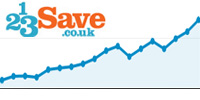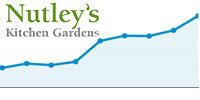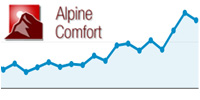SEO Troubleshooting
Uncover hidden errors holding your site back in Google!
Unsure how a few days of specialist SEO work could possibly bring visible improvements to Google rankings, organic traffic and visits to your product and services pages? SEO troubleshooting may be the answer, as many of the issues that are keep sites from the first position in Google are hidden from the naked eye. However, with guidance from an experienced SEO your site may be ready for greatness. See how in the case study below…
SEO Troubleshooting Case Study – Edif Group
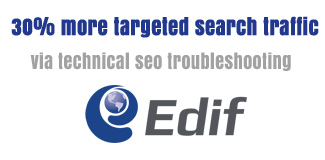
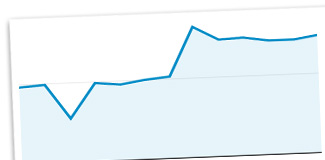
Edif Group comprises of Edif NDE and Edif ERA whom provide technical inspection, engineering and consultancy solutions for governments and large multi-national companies world-wide.
The Problem
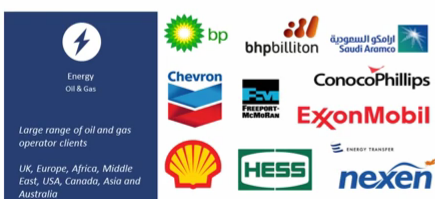 By servicing or critical industries and environments around the world Edif Group are the trusted partners of a range of national governments and large corporations including BP, ExonMobil and Shell, all of whom demand high quality, trusted and reliable solutions to their large-scale engineering and training needs around the globe.
By servicing or critical industries and environments around the world Edif Group are the trusted partners of a range of national governments and large corporations including BP, ExonMobil and Shell, all of whom demand high quality, trusted and reliable solutions to their large-scale engineering and training needs around the globe.
Having acquired a number of related organisations that provide similar services, the growing business markets and promotes its services from a single large corporate website. However, having seen a period of limited online growth since launching their improved website, the company was in need of increasing search traffic from their target markets in the UK, the US and accross the continent.
I was asked by Avatar Creative to help improve the website’s visibility in Google search results and by working with Gordon and Clare of Avatar, was responsible for identifying target keyword phrases and increasing rankings and organic traffic in a way that would result in increased traffic, leads and sales from Edif’s training course section and service pages.
The Solution
Website and Traffic Auditing
Having proposed a single 6 day SEO campaign that would be completed within 6 weeks, and mapping out the main areas that should be looked into and improved, I set about working down my task list by first gaining access to the website’s Google Analytics account and helping set up a Google Search Console profile. This allowed me to compile a large list of technical errors and SEO opportunities we could implement for Edif.
By recording our existing monthly traffic and error count, as well as our keyword positions in the UK, the US and elsewhere, I was able to provide all parties with ongoing weekly reports and the ability to monitor any drops or spikes in traffic throughout the period of the work. This also served to raise the flag when new errors had been introduced by members of Edif’s team, who were keeping the site up-to-date with new content, blog posts and information about upcoming training courses.
Technical SEO Troubleshooting
Using a range of pro SEO tools including Moz, Majestic, Ahrefs, SEMrush, and my trusty website crawler: Screaming Frog Search Spider Pro, I was able to prioritise all of the hidden on-site issues and compile a “fix list” that contained, not only the problems but also their causes and instructions on how to fix each. Working with Gordon, I was able to schedule and map each solution to either Clare, Gordon, myself, Our web developer or members of Edif’s team, depending on who had access and the relevant skills required to resolve those issues.
Because the site was still in the process of being developed and the new training section was not yet live, we were able to inform and advise Edif’s website team about issues crated by adding new items to the website without adequate meta data. For example, whilst publishing new pages about training courses their website staff had been forgetting to populate a number of fields in the content management system for each.
During this we also noticed that in some cases they had been filling them in, so we were able to alert the web developer to the coding issues that were causing many of the duplicate content and missing meta data issues for a whole range of pages on the site.
Keyword Research and Benchmarking
 Having delegated the simple fixes and improvements that could be made by Edif’s team and being able to monitor the weekly progress, I was able to go on to the work of identifying the pages that currently pulled the most organic traffic. As well as this, by using a range of tools, including Google Search itself, I was able to identify the target keyword phrases for our main products and services and set up weekly rankings reporting for each.
Having delegated the simple fixes and improvements that could be made by Edif’s team and being able to monitor the weekly progress, I was able to go on to the work of identifying the pages that currently pulled the most organic traffic. As well as this, by using a range of tools, including Google Search itself, I was able to identify the target keyword phrases for our main products and services and set up weekly rankings reporting for each.
With further work done on keyword research I was able to identify a range of “modifier” and “qualifier” keywords that, when compounded with our target keyword phrases in our pages meta data and content, would qualify our page for a whole range of other long-tail keyword phrases. Examples of this are adding the words “course” to pages about Electrical Earthing Training.
Content and Meta Optimisation
As well as our target keyword phrases, I identified a whole range of secondary keyword phrases that we currently ranked at the bottom of the first page of Google for. It is these search results that often generate the largest amount of organic search traffic. This is due to the fact that down at, say, position 6 or 7 they are not likely to garner many clicks (or even be seen) by the majority of our target search market. But with a bit of work that helps nudge them up into the top 5 or top 3 positions, an increase of traffic is usually likely to be seen.
Of course getting into position 1 is always the client’s goal, even if it is for a phrase few people are searching for, so we were wise to mix our target a range of keyword phrases with varying difficulty, in order to keep the client happy and generate more leads from our increased rankings and traffic.
The next job was to crawl the entire site and making a comprehensive spreadsheet of all our existing pages, meta data, page headings, current rankings and the amount of organic each page generated. It is in this spreadsheet that I suggested improved meta titles (the blue heading text you see in Google search results pages) and meta descriptions for each target page. After getting the go-ahead to implement my improved meta data, we were happy that each target page had chance of ranking for its target keyword phrase.
Internal Linking and Siloing
One of the most overlooked things about optimising a website is the amount of authority each page (actually each url) acquires. Pages built up authority, and therefor ranking power, by being the target of other links from within the site and importantly from other websites.
Its a fact that sometimes Google needs a little bit of help understanding which pages are the important ones, such as parent pages, category pages or hub pages that pull together lots of related items. By “siloing” the site information architecture Google is given more clues as to which pages to rank in the search results above the others.
In this process, all of the pages that are related to, say, Power Plant Inspector Training, should link to each other and also to the main page about Power Plant Inspection. As well as helping Google understand that your site has a whole bunch of useful resources about the subject, it also helps link equity flow to the pages you want to rank highly in the search results. This is even true of internal links, so be sure to interlink your related pages and add contextual links to the main hub or partent page of each section. Again, this advice was sent along with examples to the Edif team so they were better equipped to optimise their future pages before they go live.
Off-site Linking Analysis
During the course of the 6 week campaign I kept my eye on the type of incoming links the site was acquiring from other high authority, trusted and related websites. As with most sites that have been developed over the years Edif’s site had changed content management systems and link structure a number of times, so there were a number of incoming links from top quality sites that were pointing to pages which were no longer there.
By mapping these to the most relevant page on the current site, we were able to harness that wasted link equity and channel more ranking power to our target pages. With a bit of deeper inspection of the type of sites that were linking in, I was able to spot other links to domains that seemed very similar to Edif’s domain, so after some enquires with the team I was able to identify another wasted opportunity the site would benefit from.
This involved getting a list of all the domains that Edif and the partner companies it had acquired over the years and doing a second round of incoming link research on each of them. My findings were that many of the domains have acquired a fair amount of domain authority in their own right and so I had the team permanently redirect those old domains to our main website.
Continued Link Building
Having completed all of the on-site work we were able to in the time allowed, I set about listing advice for future content editors that would help them keep the errors to a minimum and this included tips on how to acquire more incoming links and social shares from other sites on the web. However, because everyone at Edif had plenty of their own work to be getting on with, it was decided that I should continue the link building work after our main campaign was completed.
The Results

Although I only had 1 day to spend on each of the main areas of on-page SEO that we hoped to touch on, we were overjoyed with the huge number of improved keyword rankings achieved. This included number 1 positions in Google UK for dozens of keyword phrases including the top slot for 5 of our target pages. As well as this, we now had pushed 10 more of our tracked keyword phrases in the top 5 results and taking us to over 50 on the first page.
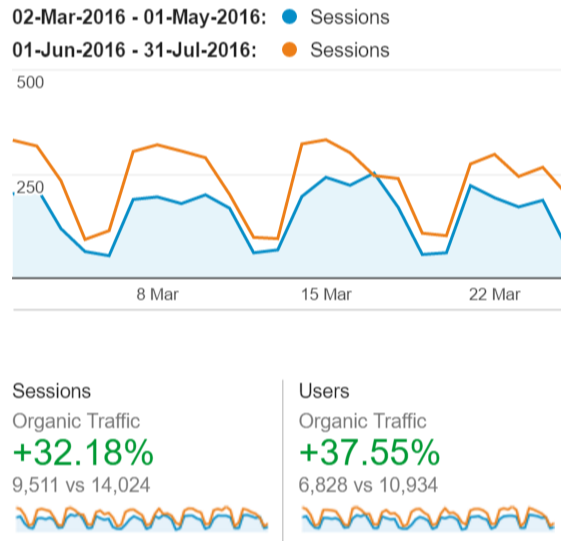
- Vast majority of SEO errors resolved
- More efficient crawl rate and indexed urls
- 5 more first position rankings in Google UK
- 10 more first page rankings in Google UK
- 32% increase in organic sessions
- 37% increase in organic visitors
 By touching on lots of different areas of SEO and grabbing just the low hanging fruit, I was able to finish off by compiling a wishlist of future SEO opportunities which would likely further increase targeted traffic to Edif’s new training courses section of the website.
By touching on lots of different areas of SEO and grabbing just the low hanging fruit, I was able to finish off by compiling a wishlist of future SEO opportunities which would likely further increase targeted traffic to Edif’s new training courses section of the website.
I really enjoyed working with the Avatar team and hope to help Edif out again in the future – be it with SEO, PPC or via Conversions Rate Optimisation – to help encourage this increased volume of targeted visitors through the site’s sale conversion funnel.
The Tesimonial
See more of my SEO case studies, see my SEO campaign packages and prices or request a free SEO audit to ensure you site isn’t making life difficult for Google to rank your webpages.



